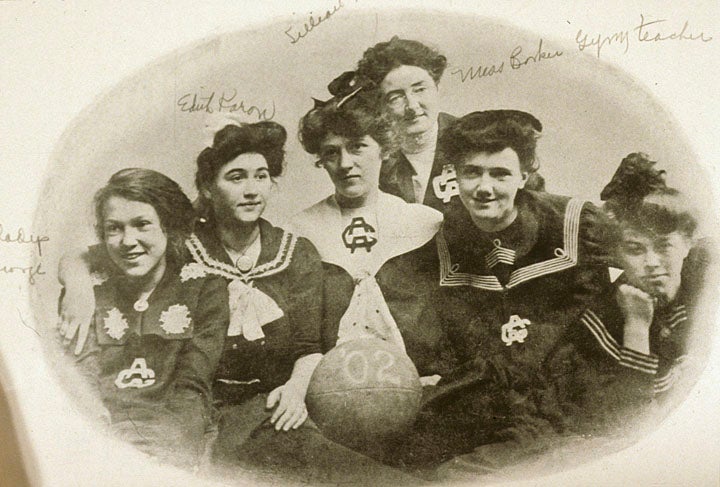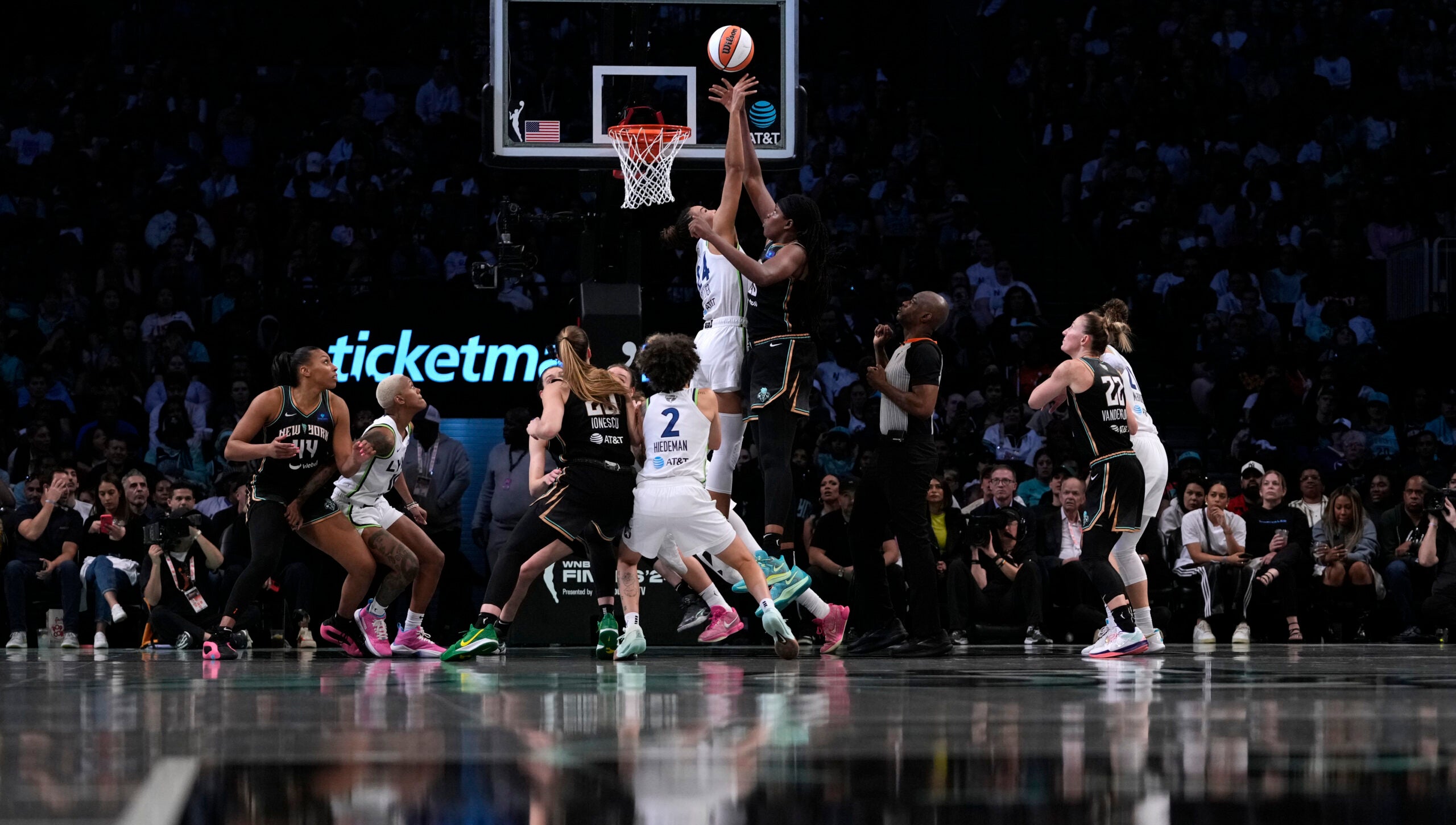We know you’ll be cheering for the Badgers men in the NCAA Championship game but Wisconsin ladies are no strangers to the court, as evidenced by this signed team photo of the 1902 women’s basketball team at the University of Wisconsin-Superior. Women had been playing basketball there for a decade by the time these ladies suited up.
Professional basketball first came to Wisconsin in 1937 with the formation of the National Basketball League. The Oshkosh All-Stars and the Sheboygan Redskins were two of the top teams in the league, with one or the other competing for the championship nearly every year. But, these early professional teams were for men only.
Women began playing basketball on the college level less than a year after the invention of the game. Physical educator James Naismith developed the game using peach baskets and a soccer-like ball in 1891 as a way to keep young athletes fit through the winter.
Stay informed on the latest news
Sign up for WPR’s email newsletter.
Gymnastics instructor Senda Berenson Abbott adapted the game for women and introduced it at Smith College in 1892. Three years later, Clara Gregory Baer published the first set of rules for women’s basketball under the fancy French-sounding name, “Basquette.” By 1895, the game was played by women across the country, including here in Wisconsin.
The first women players wore floor-length dresses but after a few broken bones and other mishaps, women adopted the more progressive but still relatively feminine bloomers. That’s likely what the Superior team wore in these photos beneath their sailor-like tops. Of course, many worried what this rough and fast game was doing to women, and balancing sport and femininity became an undercurrent of women’s basketball throughout the 20th century.
Wisconsin Public Radio, © Copyright 2024, Board of Regents of the University of Wisconsin System and Wisconsin Educational Communications Board.





